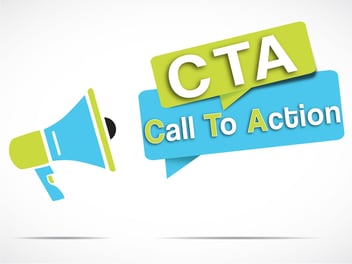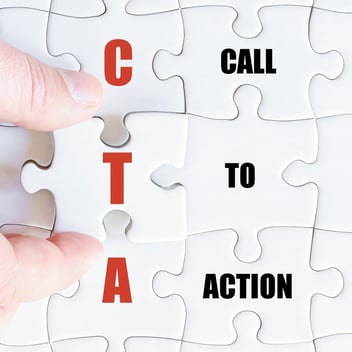Four Call-to-Action Mistakes To Avoid

Calls-to-action are your front line defense against short attention spans and information overload on the internet.
These buttons, giving readers a simple instruction about what they should do and why are like stop signs, halting their eyes and their focus long enough to think about where they are going and why.
But these essential tools in your inbound marketing strategy, designed to direct website visitors to landing pages where they can convert into leads, will only work if you avoid four common mistakes.
Need even more details on properly using CTAs? Download our Comprehensive Guide to Creating and Executing Calls-to-Action.
Call-to-Action Mistakes to Avoid
Hiding all of your CTAs at the bottom of the page
Not every visitor who comes to your website is going to scroll. Shocker, right? That doesn’t mean that you don’t have an offer that appeals to them, but if you only place calls-to-action at the bottom of each web page in a footer, many of your visitors will never see them.
While the need to place important information and CTAs “above the fold” may not be as great as in the early days of the internet, you still shouldn’t rely on readers scrolling all the way to the bottom of the page. Rareview reported that a study by ClickTale showed only 22 percent of page views included scrolling all the way to the bottom. (Click to Tweet)
Even though more than 3/4 of web page visitors do scroll some, it is still wise to place at least one top-of-the-funnel CTA above the fold. That could be in a banner at the very top of the page, as a slide-in that appears while they are still toward the top, or as part of a rotating selection of images and links.
This applies to not only your home page, but other commonly visited pages as well, including individual blog posts, services pages, or even an About Us page. The CTA could be for a blog subscription, a consultation call, or a downloadable offer such as an ebook or webinar.
Using CTAs that fade into the background
While you may not want your website to look like one big “Buy Now!” advertisement, your calls-to-action need to be visible. Don’t simply drop a few lines of text into a corner saying “Contact Us.”
Instead, create CTAs that stand out (consider a contrasting color or eye-catching graphic element) and specify the benefit to the reader, such as “Generate More Leads With Nurturing.”
It really can make a difference. Here’s proof.
Only using one CTA on each page
Not everyone who visits your website will be at the same stage in the buying cycle. If you offer only one CTA or conversion opportunity on each page, you are limiting how many different buyer personas and sales funnel stages you can reach.
Think about using a variety of CTAs on each page. A case study or ebook might appeal to a visitor who is still in the awareness and education stage, while someone nearing a buying decision would be more likely to request a demonstration or free trial.
Try to include at least three calls-to-action on your home page: for top, middle and bottom of the sales funnel.
In blog posts, you can also incorporate CTAs in a number of different ways:
-
Traditional “button” style CTAs in the header, sidebar and footer
-
In-text CTAs directly offering a download or other asset
-
Contextual CTAs linking keywords to the landing page for a related offer
Limiting CTAs to your home page
Nearly every page on your website should have a relevant call-to-action. Each blog post should include CTAs for related offers. For example, a blog post about improving employee retention might include a CTA to a sample of an employee satisfaction survey for HR managers to use.
Calls-to-action on services pages could offer consultations or downloadable listings of services with testimonials from satisfied customers. The key in placing CTAs throughout your website it to keep the offers relevant to the information that originally brought the website visitor to that specific page.
Your website isn’t the only place to use CTAs, either. Here are 11 places you should be using calls-to-action.
Provide your marketing staff with a step-by-step guide to building and using calls-to-action with our easy to use checklist: 8 Steps to Creating Calls-to-Action.
-1.png?width=1652&height=294&name=Jones(RGB)-1.png)












